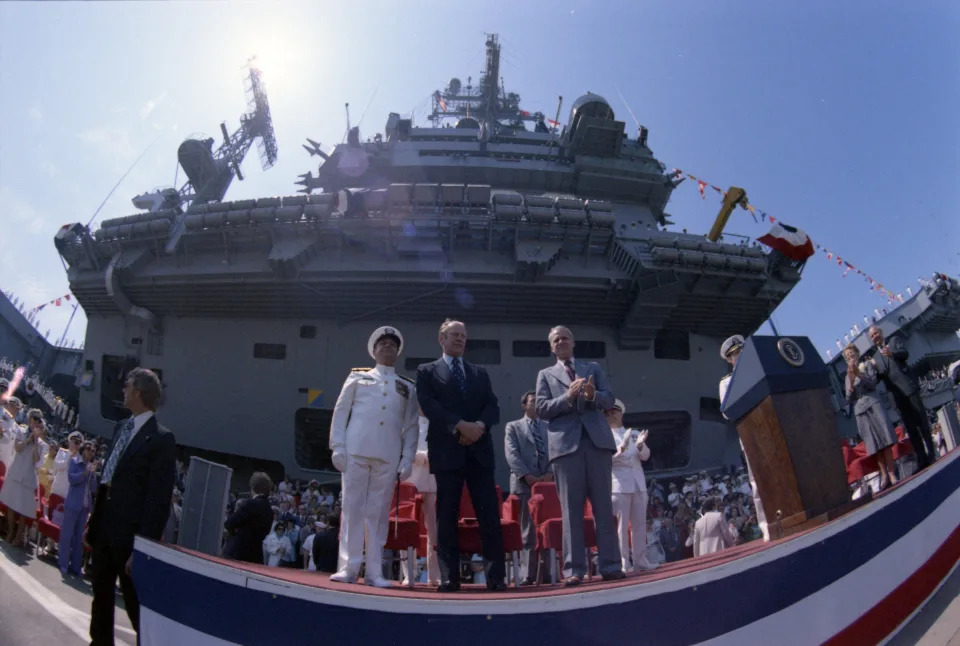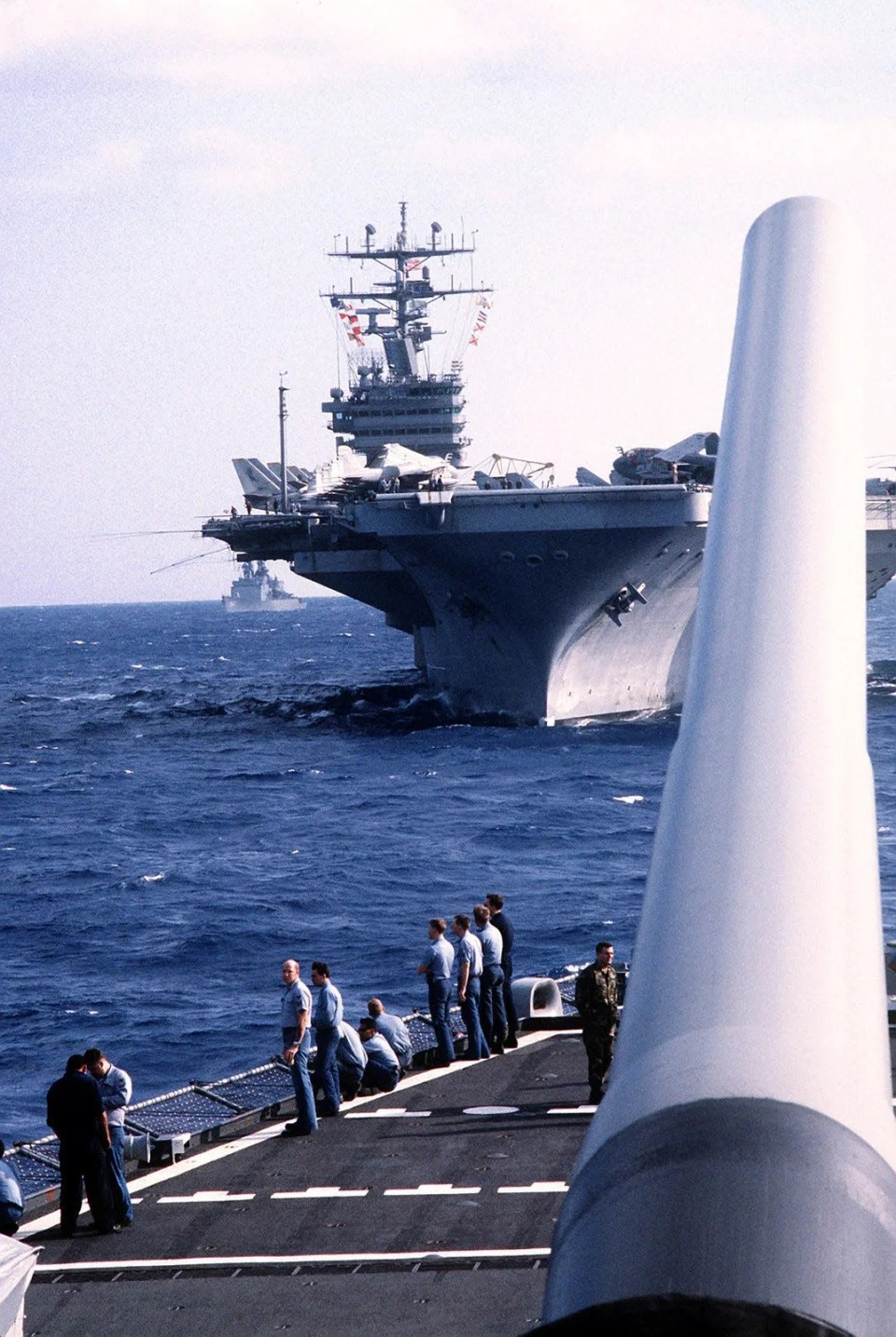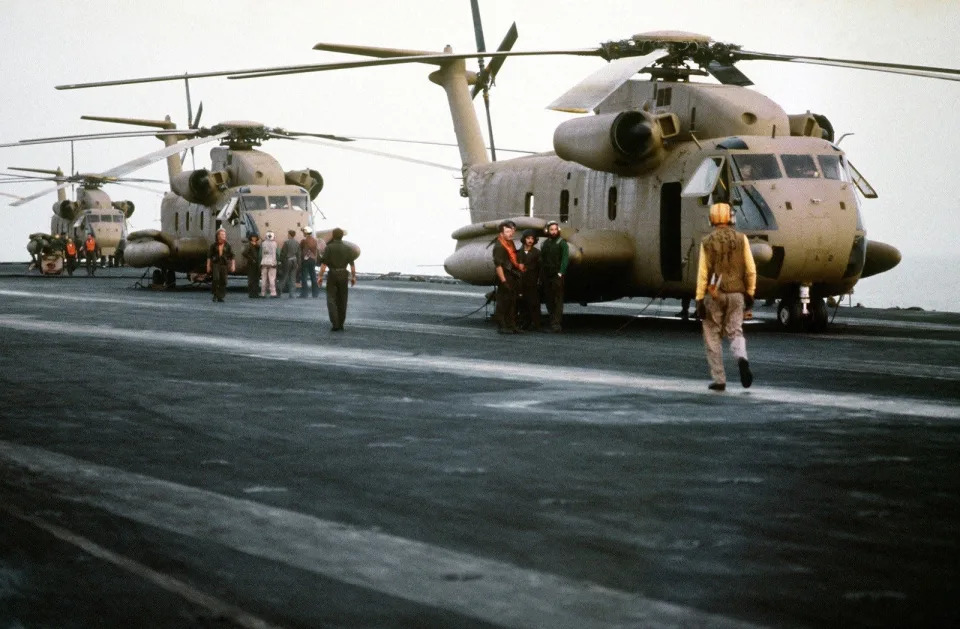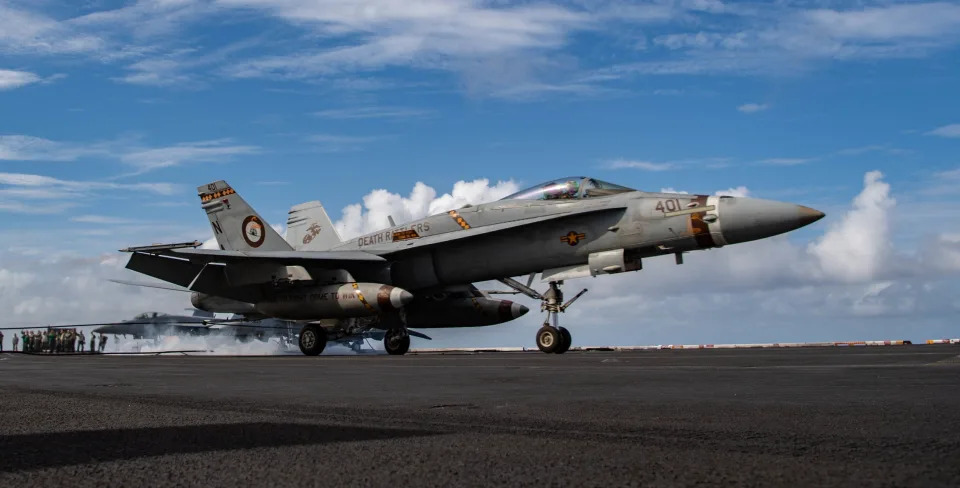Pensacola News Journal
‘Solid symbol of United States strength’: USS Nimitz introduced an enduring era
The scene in Norfolk, Virginia, on May 4, 1975, awakened memories of earlier ceremonies in the historic place where many Navy ships embarked upon their service on the Seven Seas. Historic aircraft carriers under the overall command of an admiral whose namesake ship entered service that day. Amidst pageantry that included a 21-gun salute, colorful flags fluttering in the breeze and martial music, President Gerald R. Ford marked the commissioning of the USS Nimitz (CVN 68), the world’s second nuclear-powered aircraft carrier.

“I see this great ship as a double symbol of today’s challenging times. She is first of all a symbol of the United States, of our immense resources in materials and skilled manpower, of our inexhaustible energy, of the inventive and productive genius of our free, competitive economic system, and of our massive but controlled military strength,” said the president, who during World War II sailed as a crewman on board an aircraft carrier in Fleet Admiral Chester W. Nimitz’s Pacific Fleet. “Wherever the United States Ship Nimitz shows her flag, she will be seen as we see her now, a solid symbol of United States strength, United States resolve — made in America and manned by Americans. She is a movable part and parcel of our country, a self-contained city at sea plying the international waters of the world in defense of our national interests. Whether her mission is one of defense, diplomacy or humanity, the Nimitz will command awe and admiration from some, caution and circumspection from others, and respect from all.”
President Ford’s words were prophetic and still ring true today for not only Nimitz, but also the nine Nimitz-class carriers that have followed her down the ways, the last being USS George H.W. Bush (CVN 77), which was commissioned in 2009. Though the Gerald R. Ford-class carriers, the lead ship of which was commissioned in 2017, represent the Navy’s newest flattops, the ships of the Nimitz class will remain a vital component of the Navy’s arsenal.
With the final decommissioning of USS Enterprise (CVN 65) on Feb. 3, 2017, Nimitz became the oldest active aircraft carrier in the U.S. Navy. In today’s digital world, it is humorous to read a newspaper account from 1975 lauding the technology on board the ship, where her first commanding officer, Capt. Bryan Compton, could address the crew on color television, which also boasted three channels for viewing by off-duty sailors and Marines. That she now operates with sophisticated 21st century technology speaks to the soundness of the Nimitz-class design, the lead ship having adapted to the times in her 47th year of service.
USS Langley: Pensacola welcomes Navy’s first aircraft carrier with ‘open arms’ in 1920s
Pearl Harbor attack: 80 years later, threads of attack reflect fabric of our national story

After a brief shakedown cruise in the Caribbean and North Atlantic following her commissioning, Nimitz deployed to the Mediterranean in July 1976 with the guided-missile cruisers USS South Carolina (CGN 37) and USS California (CGN 36), marking the first time in a decade that nuclear-powered ships deployed to the Mediterranean. In 1979, the carrier played a starring role on the silver screen, the ship’s spaces transformed into a Hollywood set for the filming of “The Final Countdown” starring Kirk Douglas and Martin Sheen. The plot involved Nimitz and her crew going back in time to the eve of the Pearl Harbor attack and the decision on whether to alter the course of history. The film provided a number of crewmen the opportunity to speak lines and featured aerial sequences showing VF-84 Jolly Rogers F-14 Tomcats with their colorful skull and crossbones tail markings.
It did not take long for the nation’s newest flattop to also assume a leading role on the real world stage. In 1980, while underway in the Indian Ocean during a deployment marked by 144 consecutive days at sea, RH-53 Sea Stallion helicopters launched from the ship to take part in Operation Evening Light (also known as Operation Eagle Claw). The attempted rescue of 52 American hostages held in Tehran ended in tragedy at a landing site in the Iranian desert. The following year, while Nimitz conducted exercises in the Gulf of Sidra near Libyan dictator Muammar Gaddafi’s “Line of Death,” two of her embarked F-14 Tomcats of the VF-41 Black Aces shot down a pair of Libyan Su-22 Fitters after the enemy aircraft fired upon them.

Shifting to her new homeport of Naval Station Bremerton, Washington, in 1987, Nimitz spent the ensuing years participating in Operations Earnest Will, protecting the shipping lanes in the Persian Gulf and flying combat air patrols as part of Operation Southern Watch. In the Far East, she provided U.S. Navy presence off Taiwan during a volatile standoff between that nation and China in 1995. In 1997 to 1998, she completed an around-the-world cruise, concluding it at Norfolk, the place of her birth, where she entered the yard for refueling and overhaul.
She emerged in June 2001, and just weeks after the 9/11 terrorist attacks put to sea and set course for her new homeport at NAS North Island. California. In March 2003, she deployed for the first time to the Fifth Fleet Area of Responsibility and launched air strikes in support of Operation Iraqi Freedom. The cruise marked the first deployments of both the F/A-18F Super Hornet and E-2C Hawkeye 2000, with Nimitz also becoming the first aircraft carrier to deploy with an air wing containing two Super Hornet squadrons.
In 2005, the carrier commemorated 30 years of service, film crews spending the entire deployment on board for the PBS documentary “Carrier,” which provided an intimate look at life aboard the ship. Amidst deployments supporting operations in Iraq and Afghanistan, Nimitz shifted her homeport to Everett, Washington, and helped evaluate the future of carrier aviation as the platform for the first carrier landings of the F-35C Lightning II Joint Strike Fighter. The carrier’s 2017 deployment included combat operations against ISIS in Iraq and Syria, followed by a period in overhaul.

A testament to the ship’s longevity occurred during her most recent deployment in the shadow of COVID-19, an 11-month cruise in which the carrier and embarked Carrier Air Wing (CVW) 17 conducted over 35,345 flight hours and 14,141 traps. Among the latter was a landing by an F/A-18C Hornet assigned to the Marine Fighter Attack Squadron (VMFA) 323 Death Rattlers. It marked the final time that the venerable aircraft, which equipped the famed Blue Angels from 1986 through 2020, deployed on board an aircraft carrier. When Nimitz entered service in 1975, the Hornet had yet to make its first flight.
In a message to the personnel of the U.S. Pacific Fleet on Sept. 2, 1945, Fleet Admiral Nimitz wrote about what they owed to those who made the ultimate sacrifice during World War II.
“To them we have a solemn obligation … to insure that their sacrifice will help to make this a better and safer world in which to live,” he stated. “It will also be necessary to maintain our national strength at a level which will discourage future acts of aggression aimed at the destruction of our way of life.”
The number of times Nimitz will leave the shores of the United States are numbered, her decommissioning slated for 2025, a half century after President Ford so eloquently captured in words what she represented. In that time, she has more that met the obligations her namesake outlined in 1945, and the class of carriers that followed her will carry that torch for many decades to come.
Hill Goodspeed is the historian for the National Naval Aviation Museum and a columnist for the News Journal.
